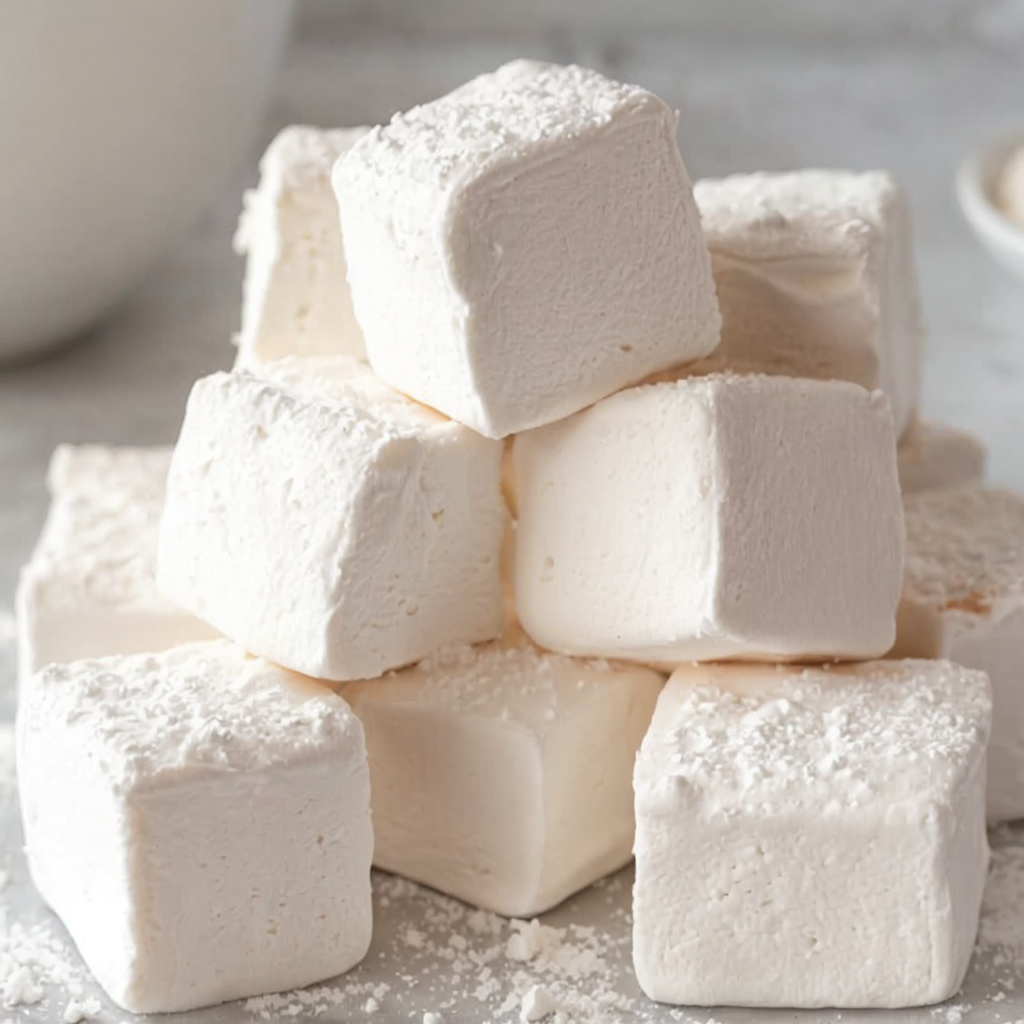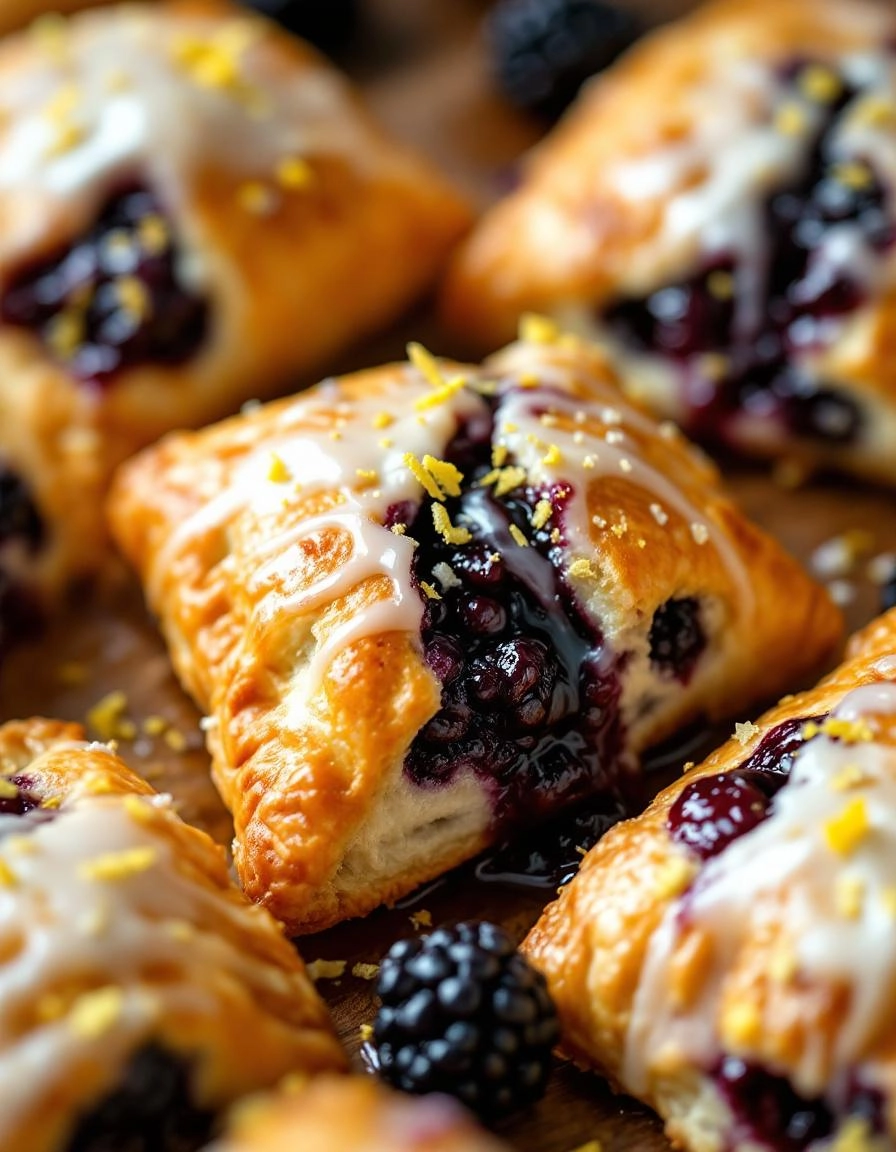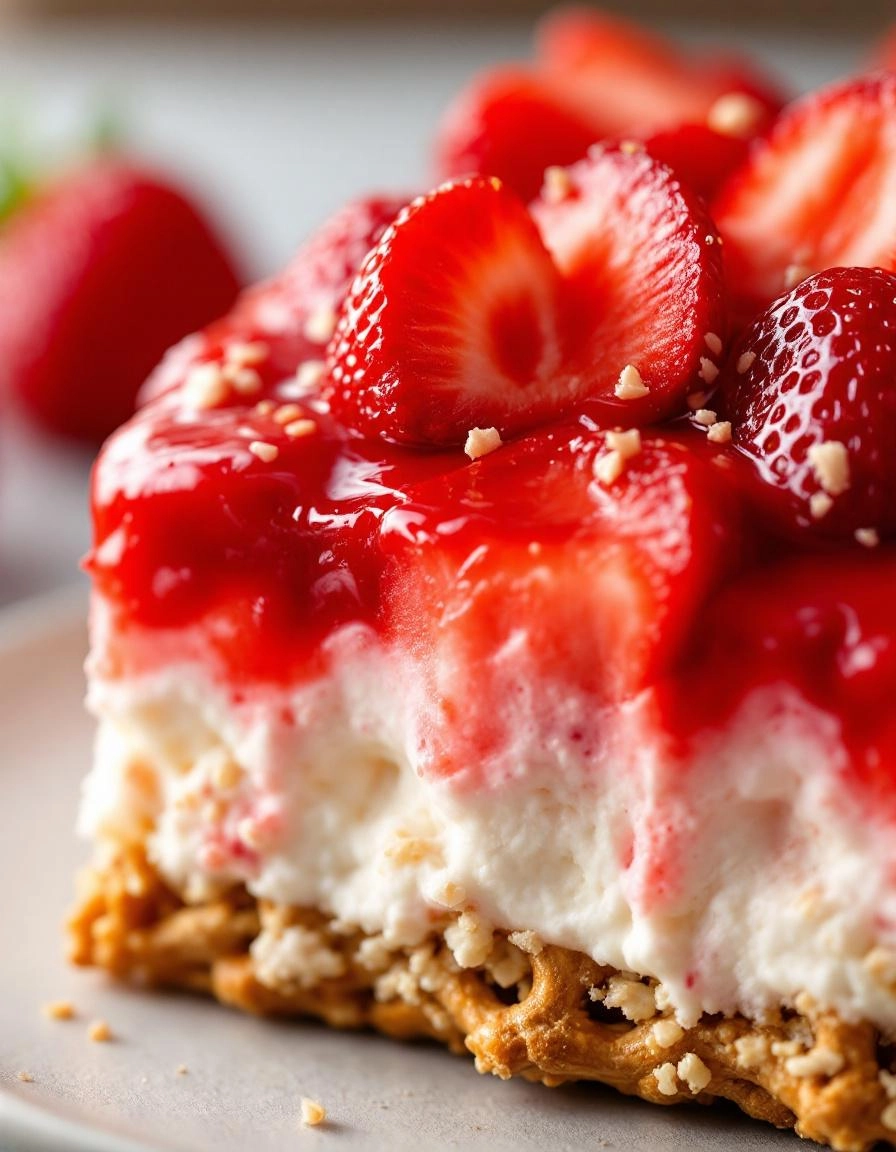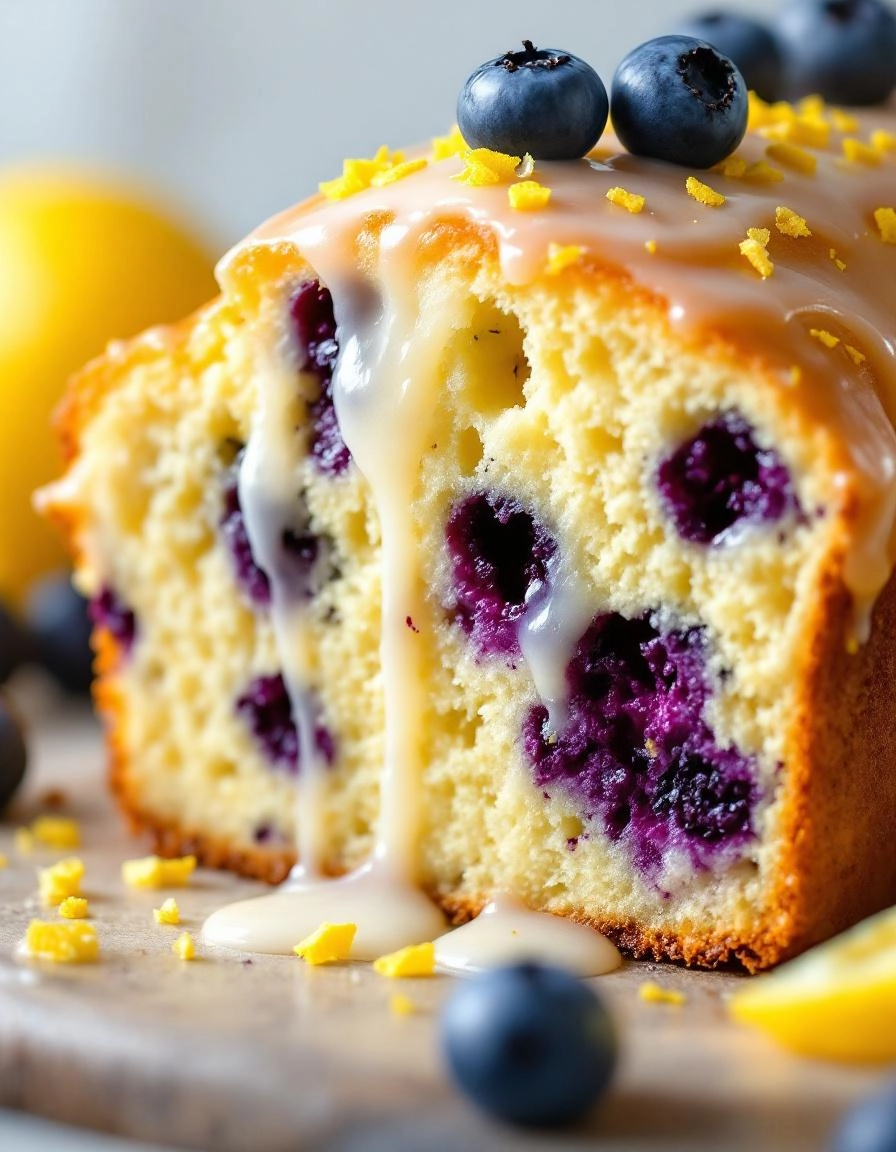Homemade Marshmallows: Soft, Fluffy, and Irresistibly Delicious
The delightfully soft and fluffy texture of homemade marshmallows is unrivaled by any store-bought version. Their versatility makes them perfect for a range of recipes from s’mores to hot chocolate toppers. Imagine biting into a cloud-like confection that melts in your mouth, releasing a perfect vanilla sweetness. Making marshmallows from scratch may sound intimidating, but it’s both a rewarding and fun process. With just a few simple ingredients and some patience, you’ll be rewarded with marshmallows that taste fresh and divine.
Quick Recipe Highlights
- Flavor Profile: Delicate sweet notes come alive with vanilla, offering a hint of nostalgia and warmth.
- Texture: Fluffy and soft with a springy feel, they melt smoothly in your mouth.
- Aroma: Inviting vanilla scent that reminds you of freshly baked cakes or sugary treats.
- Visual Appeal: Perfect squares or any shape you choose, dusted with powdered sugar to gleaming perfection.
- Skill Level Needed: Basic cooking skills suffice; careful attention to detail with temperature is necessary.
- Special Equipment: Requires a candy thermometer and mixer to achieve perfect consistency.
Recipe Overview
- Difficulty Level: The process requires patience and a watchful eye on sugar temperatures, but no advanced skills.
- Category: These marshmallows fall into the dessert and confection category, loved by both children and adults.
- Cuisine: Rooted in European tradition, these sweet delights have become a staple around campsites and in desserts worldwide.
- Cost: Ingredients are affordable, generally costing under $10 for a batch.
- Season: Ideal for winter holidays when marshmallows are featured in hot cocoa or warmly spiced desserts.
- Occasion: Perfect for parties, celebrations, or as casual snacks for family nights by the fireplace.
Why You’ll Love This Recipe
First, the taste and texture of these homemade marshmallows offer a unique appeal that commercial varieties can’t match. They are light, airy, and melt with subtle sweetness, making them a delightful experience for the taste buds. Their homemade nature allows for customization in flavors and shapes, making them a versatile confection for any occasion.
Convenience and preparation benefits make this marshmallow recipe a go-to for many. With easy-to-follow instructions and minimal ingredients, you’ll find the process straightforward. The ability to prepare them in advance and store them easily means they’re ready when you are, without the need for last-minute rushing.
Nutritionally, homemade marshmallows don’t contain artificial additives or preservatives, making them a cleaner choice for you and your family. Enjoy the sweet indulgence with a bit of moderation, ensuring you know exactly what’s going in your treats.
Socially, offering homemade marshmallows at gatherings can be a conversation starter. It shows a touch of effort and flair that guests will appreciate. Plus, pairing them with different beverages or themed desserts can add uniqueness to your event.
From a cost-effectiveness and accessibility standpoint, marshmallows are budget-friendly. The ingredients are likely staples in your pantry, and even if not, they are affordable. Take advantage of bulk ingredient savings for future batching, making them all the more economical.
Historical Background and Cultural Significance
Marshmallows boast an intriguing origin that dates back to ancient Egypt, where the sweet root of the marshmallow plant was utilized to make honey-sweetened treats. Over the centuries, the recipe evolved, with the French refining it into an aerated confection using egg whites, sugar, and cornflour.
Culturally, marshmallows have been celebrated as a charming treat across various traditions and holidays. Whether it’s roasting them over a campfire or topping a Thanksgiving sweet potato dish, they evoke a sense of joy and togetherness.
Evolution of marshmallows to their current form began in the 19th century. Gelatin replaced the plant extract, leading to the more recognizable version today. This innovation allowed for mass production and accessibility worldwide.
Different regions have their variations, with some infusing local flavors or spices. For example, in South America, you might find dulce de leche versions, showcasing the adaptability and cultural integration of this beloved sweet.
Ingredient Deep Dive
Granulated sugar, a primary ingredient, has a rich history. It dates back to the sugarcane traditions of Southeast Asia. Its role in marshmallows is pivotal, offering sweetness and structure. Selection tips include choosing pure cane sugar for optimal texture. Store it in a cool, dry place to prevent clumping.
Gelatin, derived from collagen, is crucial for the marshmallow’s structure and chewiness. It provides that iconic bounce. Choose unflavored gelatin for the best results, and store it in an airtight container away from light and moisture to prolong its shelf life. Vegetarian variants like agar-agar can offer substitutes.
Corn syrup adds softness and flexibility, preventing crystallization of the sugar. Choose light corn syrup for a neutral flavor impact. Storage is hassle-free; keep it in a pantry, tightly sealed to avoid contamination or drying out.
Vanilla extract delivers aromatic sweetness. Opt for pure vanilla extract for depth of flavor rather than artificial ones. Store it in a cool, dark place after sealing tightly to maintain its potency.
Each component plays a distinctive role in the intricate flavors and textures of homemade marshmallows, ensuring they are a sensory delight.
Common Mistakes to Avoid
- Skipping the candy thermometer: Temperature precision is key to perfect texture.
- Over-beating the mixture: This can lead to unwanted air pockets and a dense texture.
- Not greasing the pan properly: This causes sticking and difficulty in removing marshmallows.
- Adding flavoring too early: Wait until the mixture is cooled slightly to retain their essence.
- Using the wrong gelatin type: Ensure it’s unflavored and clearly labeled gelatin, not dessert jelly.
- Under-mixing syrup and gelatin: This may cause separation as the candy sets.
- Cutting before fully set: Impatience will result in uneven and gooey interiors.
- Leaving uncovered: Without proper cover, marshmallows can dry out or absorb unwanted flavors.
Essential Techniques
Accurately measuring ingredients is vital in marshmallow making to ensure consistency and perfect results every time. Use a digital scale for the best precision and avoid deviations.
Knowing how to properly dissolve gelatin is fundamental. Bloom the gelatin in cold water before heating gently until fully clear, ensuring no granules remain to ruin texture.
Temperature monitoring with a candy thermometer avoids pitfalls. It ensures your sugar syrup reaches the “soft-ball” stage necessary for marshmallow set.
Mastering the beating technique with a stand mixer achieves the right fluffiness. Start slow before increasing speed, overseeing the thickening as it cools.
Visual cues are just as significant. A final glossy sheen on your mixture indicates it’s ready to set. This, accompanied by pulling in the mixture to soft peaks, helps judge readiness and timing.
Pro Tips for Perfect Homemade Marshmallows
Ensure all equipment is thoroughly clean to avoid sugar crystallizing, which can ruin the texture. An unclean bowl can introduce impurities, leading to gritty results.
Adjust the resting time based on humidity. High humidity may lengthen the time needed to set fully, so be patient for best results.
Try using silicone molds for fun shapes and easy removal. They allow both creativity and practicality, adding a whimsical touch to your confections.
Incorporate a dusting mix using equal parts cornstarch and powdered sugar. This prevents sticking and provides a snowy finish that complements their soft nature.
Avoid over-coloring; subtle pastel shades are more appetizing and appealing. Too much dye can impart undesirable flavors and mar your marshmallows’ pristine nature.
To make marshmallows extra light, try whipping your spatula in long, gentle strokes rather than aggressive, vigorous mixing. This preserves the airiness integral to a perfect batch.
Flavor experimentation can be wonderful; however, use concentrated flavor oils sparingly. A little goes a long way, and overflavoring can overwhelm their delicate profile.
Packaging homemade marshmallows individually in wrappers helps maintain their soft texture and prevents them from hardening or melding together.
Variations and Adaptations
Incorporate regional ingredients to explore variations, such as adding a pinch of matcha powder for a Japanese twist or coconut milk for a tropical flair.
To adapt seasonally, infuse syrups with spices like cinnamon or nutmeg during fall and winter for a warming effect. Summer calls for zesty lemon or fruit-infused variations.
Dietary modifications include vegan marshmallows using agar-agar. Ensure proper recipe adjustments for setting times and texture differences.
Infuse different flavors such as peppermint for winter holidays or rosewater for an exotic taste, offering a delightful change from the standard vanilla.
For texture modifications, add inclusions like mini chocolate chips or toasted nuts. These add a creative crunch or burst of flavor, altering the traditional smooth texture.
Experiment with presentation by cutting them into fun shapes like stars or hearts, using cookie cutters to tailor them to different occasions or themes.
Serving and Presentation Guide
Plating techniques matter to enhance the marshmallow’s appearance, using a decorative tray or platter lined with parchment.
Garnishing ideas include dusting with cocoa or a drizzle of dark chocolate, elevating flavor and visual appeal.
Traditional accompaniments are graham crackers and chocolate, creating perfect s’mores. Pair with cups of hot cocoa or chai for a cozy touch.
For modern serving suggestions, layer in dessert jars with whipped cream and berries, offering single-serve parfaits.
Consider serving at room temperature for perfect chewiness, avoiding refrigeration, which can harden them excessively.
Portion control is crucial when serving to groups; ensure evenly cut pieces to make them manageable bites, preventing overindulgence.
Wine and Beverage Pairing
For wine pairings, opt for a sweet dessert wine like a Moscato or Riesling which complements the vanilla and sugar notes beautifully.
Non-alcoholic alternatives include pairing with a rich hot chocolate, allowing the marshmallow to melt and blend in for extra creaminess.
Coffee pairings work splendidly, especially richer blends like mocha or a vanilla latte, enhancing both flavors harmoniously.
Serve hot beverages at a moderate temperature to enable marshmallow melting, enhancing the overall experience with an indulgent twist.
Consider creative blends like spiced apple cider for cooler seasons, providing a warming match for marshmallow sweetness at gatherings.
Storage and Shelf Life
Proper storage ensures longevity. Store in an airtight container at room temperature in a cool, dry place, protecting them from humidity and drying out.
Avoid refrigeration, as the cold can cause them to stiffen unnaturally, altering texture and making them less enjoyable to consume.
Glass containers with tight-sealing lids prevent unwanted flavors and pest ingress, maintaining freshness and flavor integrity.
Signs of spoilage include a dusty texture or off smells, indicating they’ve either absorbed ambient moisture or started degrading.
Marshmallows can be frozen for long-term storage. Place them in layers, separated by parchment paper before sealing to avoid sticking.
Gently reheat stiff or frozen marshmallows by setting them out at room temperature for an hour, regaining their softness and pliability.
Make Ahead Strategies
Begin the prep timeline a day before serving, allowing marshmallows plenty of time to set properly overnight for firm yet soft pieces.
Store marshmallow mixture between steps by covering partially with cling wrap or a silicone mat, keeping it protected during resting periods.
Assess quality regularly, ensuring consistency and texture remain intact through the stages. The quality of ingredients and preparation will shine through with patience.
Assembly tips include cutting them with a warm, lightly oiled knife for smooth edges, making them both delectable and visually appealing.
Reheat in low-heat situations like gently over a stove or submerging in warm water if making marshmallow fluff, maintaining the mixture’s integrity.
Introduce fresh elements directly before serving, like a fresh dusting of sugar or a light chocolate drizzle, adding novel textures or flavors.
Scaling Instructions
Halve the recipe for smaller batches, maintaining ingredient ratios to preserve flavor and textural balance. Adjust measuring equipment accordingly for precision.
To double or triple, use a larger mixer and ensure uniform heat distribution on sugar syrup, avoiding crystallization or undercooking.
Equipment adjustments include using wider pans for even spreading and larger bowls for adequate mixing space without spillage or inconsistent textures.
Timing modifications might be necessary, particularly when melting ingredients in larger quantities, requiring closer supervision for consistent outcomes.
Store excess malleable marshmallows in single layers, with parchment separators, to avoid squishing in containers, retaining their ready-to-go state.
Nutritional Deep Dive
A macro breakdown shows marshmallows are primarily carbohydrate-rich with sugars attributing to their energy-boosting quality. They offer minimal fat or protein.
Micronutrient analysis reflects low vitamins and minerals, characterizing marshmallows as an occasional treat rather than a daily nutritional staple.
Despite indulgence, their portion control facilitates moderation, beneficial for maintaining a balanced diet and preventing sugar overconsumption.
Health benefits are distinctively psychological, offering comfort in moderation rather than nutritional benefits, enhancing mood through sweetness.
Assess portion sizes properly, ensuring you enjoy them without compromising health goals, making them an occasional treat within a balanced diet.
Weight management through limited marshmallow treat days helps sustain energy allowance while still satisfying sweet cravings responsibly.
Dietary Adaptations
For gluten-free marshmallows, ensure all ingredients are certified gluten-free, including cornstarch and flavorings, accommodating coeliac and sensitive individuals.
For a dairy-free version, adhere to traditional recipes as marshmallows contain no dairy by default, avoiding milk-based additives or dips.
Vegan marshmallows utilize agar-agar instead of gelatin, informed by plant-based dietary adherence while offering a fluffy and satisfying chew.
Low-carb enthusiasts must consider marshmallows an occasional indulgence due to high sugar content unless modifying with sugar substitutes wisely.
Keto variations are rare but possible by using alternative sweeteners and gelatin types, creating a compatible treat within the keto dietary guidelines.
Paleo followers can enjoy marshmallows made with honey instead of corn syrup, aligning the recipe with natural sweeteners in the paleo diet.
Low-FODMAP versions focus on quality vanilla and a reduction in serving size. It avoids digestive aggravation for sensitive individuals without excessive sugar.
The Recipe
Homemade Marshmallows
Serves: 24 pieces
Prep Time: 15 mins
Cook Time: 20 mins
Total Time: 35 mins
Kitchen Equipment Needed
- Candy thermometer
- Stand mixer with whisk attachment
- 9×13 inch baking dish
- Silicone spatula
- Heavy saucepan
- Sharp knife
Ingredients
- 3 packets unflavored gelatin
- 1 cup cold water, divided
- 1 1/2 cups granulated sugar
- 1 cup light corn syrup
- 1/4 teaspoon salt
- 1 tablespoon pure vanilla extract
- Powdered sugar for dusting
Directions
- In the bowl of a stand mixer, sprinkle gelatin over 1/2 cup cold water. Let it stand to soften.
- In a heavy saucepan, combine granulated sugar, corn syrup, salt, and remaining 1/2 cup water.
- Place over medium heat and attach a candy thermometer. Bring to a boil and cook until the mixture reaches 240°F.
- With the mixer on low speed, carefully pour hot syrup into gelatin. Gradually increase speed to high and whisk until thick and fluffy—about 10-12 mins.
- Add vanilla extract and beat until combined.
- Pour marshmallow mixture into a greased 9×13 inch baking dish. Smooth top with a spatula.
- Dust the top with powdered sugar. Let it stand, uncovered, for 4 hours or until firm.
- Cut into squares and dust with more powdered sugar if needed.
Recipe Notes
- Maintain a steady temperature to prevent marshmallow deflation.
- Experiment with different extract flavors for variety.
Troubleshooting Guide
For texture issues such as too firm or too soft marshmallows, reassess your sugar cooking temperature and ensure your gelatin was fully dissolved.
If marshmallows lack flavor balance, try experimenting with the levels of vanilla or other extracts, adding citrus zest for a fresh twist.
Temperature problems often arise from incorrect thermometer readings. Ensure the thermometer isn’t touching the pot’s base for accurate readings.
Equipment challenges such as poor mixing may mean your stand mixer isn’t powerful enough; consider upgrading to one with substantial capability.
Ingredient substitutions should be well-researched. Ensure you understand the effect on texture when using agar-agar instead of gelatin.
Timing concerns are critical in marshmallow setting. Be patient with resting times, ensuring they are firm before attempting to cut into desired shapes.
Recipe Success Stories
Many in our community have shared delightful feedback about how these homemade marshmallows became an instant hit at gatherings and celebrations. Experimenting with peppermint or lavender has introduced new favorites, highlighting the adaptability of this recipe.
Others have adapted them successfully into a vegan version using agar-agar, thanks to shared tips, marking great success in catering to diverse dietary needs.
Reader suggestions for coating them in toasted coconut have sparked creativity. Feedback emphasizes how addition of texture enhances the overall experience.
Photography tips suggest capturing them with additional decorative elements, offering aesthetically pleasing images loved by all who’ve seen—or tasted—them.
Community collaboration enhanced these marshmallows’ journey, celebrating successful trials and innovative ideas.
Frequently Asked Questions
What is the recommended storage for homemade marshmallows?
Store marshmallows in an airtight container in a cool, dry pantry. Avoid refrigerating to prevent hardening and maintain soft, fluffy textures.
Can I use other sweeteners instead of granulated sugar?
Adjustments with other sweeteners like honey or agave may affect consistency and sweetness, requiring experimentation to perfect the balance.
How do I prevent marshmallows from sticking together?
Dust marshmallows liberally in a mixture of cornstarch and powdered sugar to ensure they remain separate, fresh, and easy to handle.
Are there vegan alternatives for homemade marshmallows?
Yes, substituting agar-agar for gelatin creates a vegan-friendly version. Adjusting ratios is crucial to achieve the desired texture.
Why do my marshmallows crystallize?
Crystallization occurs if sugar isn’t fully dissolved. Ensure the sugar syrup is smooth before adding to gelatin, avoiding gritty textures.
Can I make flavored marshmallows?
Absolutely. Experiment with different extracts like almond or peppermint, or add finely zest grated citrus for a refreshing burst of flavor.
How do I know if my sugar has reached the right temperature?
Use a candy thermometer to measure accurately. For marshmallows, the sugar syrup should reach the “soft-ball” stage at 240°F.
How long do marshmallows last?
When stored properly in an airtight container, homemade marshmallows can last for up to 3 weeks, maintaining their texture and flavor.
Is it possible to make marshmallow fluff instead of pieces?
Yes, use the same recipe and avoid longer setting. For marshmallow fluff, whip to a spreadable consistency, omitting the final solidifying step.
What if my marshmallows won’t set?
If you encounter setting issues, check your gelatin’s expiration. Ensure everything was mixed adequately, and allow additional resting time if needed.
Additional Resources
Explore related recipes like homemade s’mores or hot chocolate featuring your marshmallows for thematic treats adored by family and friends.
Technique guides on candy thermometer usage or whipping to soft peaks can enhance your confectionary skills, ensuring precise execution.
Delve into ingredient information, from understanding gelatin alternatives to flavor profile enhancements for those seeking deeper culinary exploration.
Equipment recommendations keep your kitchen stocked with the right tools for successful marshmallow creation, promoting efficiency and ease.
Seasonal variations can transform marshmallows’ adaptability for any occasion, from summer barbecues to cozy holiday treats, all year round.
Join the Conversation
Engage with us on social media platforms to share your delightful creations, leveraging hashtags to showcase unique variations and inspire others.
Incorporate photography tips to enhance your food styling, capturing marshmallow moments with flair and creativity for aspiring food photographers.
Submit recipe reviews to offer insights into your experiences, helping fellow enthusiasts refine their techniques and encourage recipe sharing.
Contribute to community engagement by suggesting flavor combinations or posing questions, fostering a culinary journey filled with discovery and fun.
Celebrate recipe variations, showcasing delectable adaptations that honor personal tastes and dietary preferences, promoting a shared love of marshmallows.






